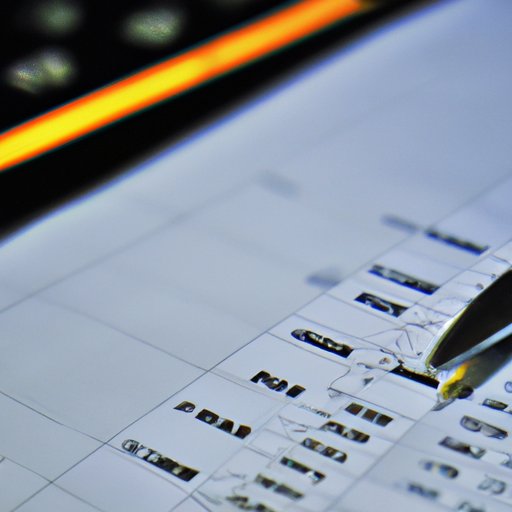Introduction
Tracking finances in Excel is an effective way to gain visibility into your financial situation. Excel is an easy-to-use spreadsheet program that allows users to store, organize, and analyze data. With the help of Excel, you can track spending, income, expenses, financial goals, investments, and more. This article will provide step-by-step instructions on how to use Excel to track your finances.
Create a Budget Worksheet
The first step in tracking finances in Excel is to create a budget worksheet. This worksheet should include columns for income, expenses, and savings. You can also add additional columns for any other information you wish to track. To create this worksheet, start by opening a new Excel workbook and entering the column headings. Then, enter your income, expenses, and savings information into the appropriate cells. Once you have entered all of your data, you can use formulas to calculate totals and averages. This will allow you to easily track your spending, income, and expenses over time.
Set Up Financial Goals
Another great way to use Excel to track finances is to set up financial goals. You can use Excel to set both short-term and long-term goals. For example, you can set a goal to save a certain amount of money each month or to pay off a loan within a certain period of time. Once you have set your goals, you can use Excel to track your progress over time. This will allow you to easily see if you are on track to reach your goals or if you need to make adjustments.
Use Charts and Graphs
Charts and graphs are a great way to visualize financial data in Excel. With charts and graphs, you can quickly and easily identify trends and patterns in your data. This can be especially helpful when tracking investments or setting up budget goals. To create a chart or graph in Excel, simply select the data you want to include and then click the “Insert” tab. From there, you can choose from a variety of different types of charts and graphs.
Automate Tasks with Macros
Macros are another powerful tool that can be used to automate repetitive tasks in Excel. For example, if you frequently need to update your budget worksheet or run the same calculation multiple times, you can use macros to automate these processes. To create a macro in Excel, simply record the steps you want to automate and then save the macro. Once saved, you can easily run the macro whenever you need to.
Track Investments
Finally, you can use Excel to track investments such as stocks, mutual funds, and other assets. To do this, you will need to enter the information about your investments into an Excel worksheet. Once this is done, you can use formulas and charts to analyze the performance of your investments over time. This will allow you to quickly identify any trends or patterns in your investment data.
Conclusion
Tracking finances in Excel is a great way to gain visibility into your financial situation. With Excel, you can create budget worksheets, set up financial goals, visualize data with charts and graphs, automate tasks with macros, and track investments. By following the steps outlined in this article, you can easily get started with tracking your finances in Excel.
(Note: Is this article not meeting your expectations? Do you have knowledge or insights to share? Unlock new opportunities and expand your reach by joining our authors team. Click Registration to join us and share your expertise with our readers.)
